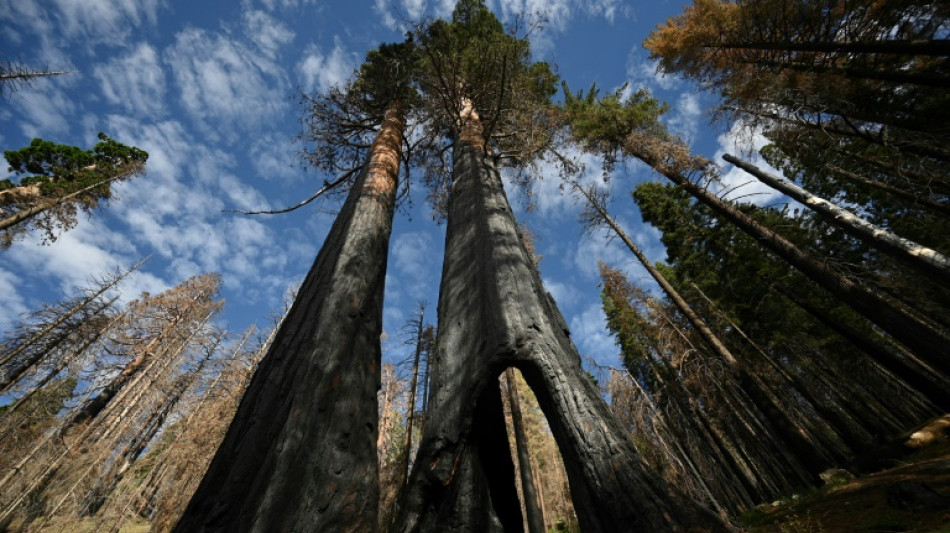
-
 Pollution hotspots at England's most famous lake need 'urgent' action
Pollution hotspots at England's most famous lake need 'urgent' action
-
Stock markets cautious with eyes on Ukraine talks

-
 Azam, Rizwan demoted in contracts as Pakistan scrap A category
Azam, Rizwan demoted in contracts as Pakistan scrap A category
-
300-year-old violin to star at UK music festival

-
 Ukraine allies meet with hopes of peace talks breakthrough
Ukraine allies meet with hopes of peace talks breakthrough
-
Mediators await Israeli response to new truce offer
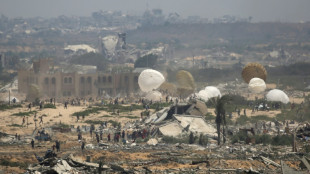
-
 Markram leads South Africa to 296-8 in ODI series-opener
Markram leads South Africa to 296-8 in ODI series-opener
-
Brazil asks Meta to remove chatbots that 'eroticize' children

-
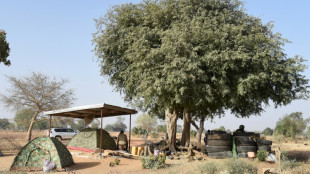 Togo tight-lipped as Burkina jihadists infiltrate north
Togo tight-lipped as Burkina jihadists infiltrate north
-
Survivors claw through rubble after deadly Pakistan cloudburst

-
 South Africa quick Rabada out of Australia ODI series with injury
South Africa quick Rabada out of Australia ODI series with injury
-
Air Canada flight attendants vow to defy back-to-work order as strike talks resume

-
 'Call of Duty' to fire starting gun at Gamescom trade show
'Call of Duty' to fire starting gun at Gamescom trade show
-
UN says record 383 aid workers killed in 2024
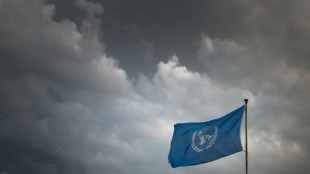
-
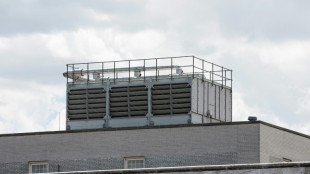 NYC Legionnaires' disease outbreak kills 5
NYC Legionnaires' disease outbreak kills 5
-
Asian markets cautious after Zelensky-Trump talks

-
 Home hero Piastri to have Australian F1 grandstand named after him
Home hero Piastri to have Australian F1 grandstand named after him
-
Maduro says mobilizing millions of militia after US 'threats'

-
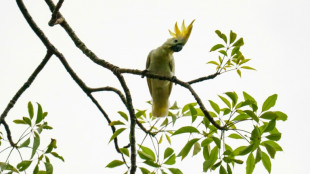 HK scientist puts hope in nest boxes to save endangered cockatoos
HK scientist puts hope in nest boxes to save endangered cockatoos
-
Swiatek beats Paolini to clinch WTA Cincinnati Open title

-
 Brazil's top court rules US laws do not apply to its territory
Brazil's top court rules US laws do not apply to its territory
-
Suits you: 'Fabulous' Zelensky outfit wows Trump

-
 Pro-Trump outlet to pay $67 mn in voting defamation case
Pro-Trump outlet to pay $67 mn in voting defamation case
-
Downton Abbey fans pay homage to 'beautiful' props before finale

-
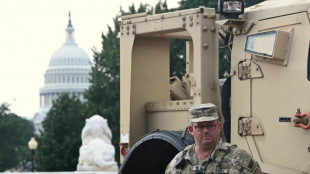 Republican-led states sending hundreds of troops to US capital
Republican-led states sending hundreds of troops to US capital
-
Putin and Zelensky set for peace summit after Trump talks

-
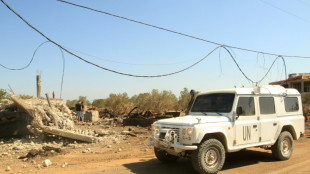 UN debates future withdrawal of Lebanon peacekeeping force
UN debates future withdrawal of Lebanon peacekeeping force
-
Trump says arranging Putin-Zelensky peace summit

-
 Sinner vows to play US Open after Cincy retirement
Sinner vows to play US Open after Cincy retirement
-
Leeds beat Everton for perfect start to Premier League return

-
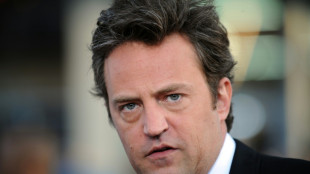 'Ketamine Queen' to plead guilty over drugs that killed Matthew Perry
'Ketamine Queen' to plead guilty over drugs that killed Matthew Perry
-
Guirassy sends struggling Dortmund past Essen in German Cup

-
 Stocks under pressure as Zelensky-Trump talks underway
Stocks under pressure as Zelensky-Trump talks underway
-
Alcaraz wins Cincinnati Open as Sinner retires

-
 Trump floats Ukraine security pledges in talks with Zelensky and Europeans
Trump floats Ukraine security pledges in talks with Zelensky and Europeans
-
Doak joins Bournemouth as Liverpool exodus grows

-
 Excessive force used against LA protesters: rights group
Excessive force used against LA protesters: rights group
-
Panama hopes to secure return of US banana giant Chiquita
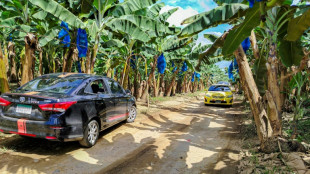
-
 'Things will improve': Bolivians look forward to right's return
'Things will improve': Bolivians look forward to right's return
-
Trump welcomes Zelensky with fresh optimism on peace deal

-
 Israeli controls choke Gaza relief at Egypt border, say aid workers
Israeli controls choke Gaza relief at Egypt border, say aid workers
-
Air Canada flight attendants vow to defy latest back-to-work order

-
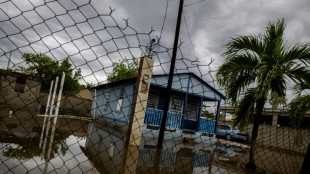 Hurricane Erin drenches Caribbean islands, threatens US coast
Hurricane Erin drenches Caribbean islands, threatens US coast
-
Europeans arrive for high-stakes Trump and Zelensky talks

-
 Trump, Zelensky and Europeans meet in bid to resolve split over Russia
Trump, Zelensky and Europeans meet in bid to resolve split over Russia
-
Hamas accepts new Gaza truce plan: Hamas official

-
 Stocks under pressure ahead of Zelensky-Trump talks
Stocks under pressure ahead of Zelensky-Trump talks
-
Russian attacks kill 14 in Ukraine ahead of Trump-Zelensky talks

-
 Lassana Diarra seeks 65 mn euros from FIFA and Belgian FA in transfer case
Lassana Diarra seeks 65 mn euros from FIFA and Belgian FA in transfer case
-
Air Canada flight attendants face new pressure to end strike


Helping or hindering? US scientists debate how to save giant sequoias
When ferocious wildfires tore through California's prized giant sequoia forests, they killed towering trees that have lived there for thousands of years -- and perhaps changed the nature of the groves forever.
Now the US National Park Service (NPS) wants to give Mother Nature a helping hand, planting lab-grown seedlings it says will kick-start the return of these magnificent stands.
"The goal is to reestablish enough sequoias in the first few years after fire so that we have trees 60, 100, 400 years from now," says Christy Brigham, chief of resources management and science at Sequoia and Kings Canyon National Parks.
Giant sequoias are truly impressive -- so disproportionately huge they look like holdouts from the age of the dinosaurs.
The biggest rise taller than 300 feet (90 meters) with trunks almost 30 feet in diameter; the oldest sprouted more than 3,200 years ago.
Once widespread, they are now only found in a narrow range in California.
- Climate change and fire suppression -
"When you see a sequoia, they're these huge, quirky, broken old things, and you recognize them as an individual that's lived a really long time," Brigham told AFP in the heart of California's Redwood Mountain Grove.
"That helps us think about long timescales when we're thinking about our actions, things like climate change and forest management."
It's these two issues that have combined to bring the sequoias to their current pass.
Decades of well-intentioned fire-suppression policies have left many sequoia groves stuffed with unburned smaller trees and shrubs.
When human-caused climate change supercharged a drought last decade, this greenery dried out, becoming a tinderbox ready to explode.
Giant sequoia need fire to reproduce -- the flames clear and nourish the soil, making it ready to receive the seeds the heat has prised out of their cones.
But, the NPS says, the fires of 2020 and 2021 were just too much, killing as many as 14,000 adult trees -- up to a fifth of all the specimens on the planet.
- Dead, blackened spires -
"What we saw in those groves is that the fire just roared in there," says Brigham. "It got into the canopy of the sequoias, and torched these trees that are 200 feet tall, which we've never seen before."
Instead of the thriving scenes of rebirth they had hoped for, forest managers who ventured into the groves found mostly dead, blackened spires.
"We saw very few cones and we saw almost no seedlings, which is unheard of," says Brigham.
The situation is so bad in six groves in Kings Canyon and Sequoia National Parks that there aren't enough living trees or viable seedlings to keep the population going, the NPS says.
They fear that without help, these spaces could be taken over by shrubs and faster-growing pines and oaks.
The plan, which Brigham and her colleagues hope will be given the green light in October, is to plant hundreds of cultivated seedlings per acre (hectare).
Work crews will be trekking in on mules or using helicopters to drop off supplies, in a $4.4 million project that envisages several years of planting and decades of monitoring.
Andrew Bishop, a restoration ecologist at the NPS, says two or three years on from the fires there are some self-seeded plants, but nowhere near enough.
"The critical concern is, we are standing in the middle of a 400-acre block of high severity fire, and we have no living reproductive giant sequoias.
"When there are future fires, there's not a chance, there's no insurance policy.
"These groves are not going to recover without restoration."
- 'Serious risks' -
Not everyone agrees.
"These groves do not need to be planted, and there are serious downsides and risks to planting," says Chad Hanson, a research ecologist and the director of the John Muir Project, an environmental campaign group.
Hanson and his team of researchers say the NPS has undercounted the number of natural seedlings, in some cases by thousands per acre.
"There are so many sequoia seedlings in these high intensity fire patches that it's hard to walk," he said.
Sending in large teams of workers and mules would likely result in crushing the self-seeded plants.
"They're probably going to kill a lot more than they even plan to plant."
Nursery-grown seedlings also bring with them the risk of root pathogens the groves have never seen before, says Hanson, which could compromise the health of reproductive adult trees.
And if the replanting program doesn't work the way the NPS envisages, Hanson fears authorities will propose ever-more aggressive interventions.
"That may include what they call thinning -- which in most cases is a euphemism for some type of logging -- and spraying herbicides and then planting again," he said.
None of which should be happening in a wilderness, where the most complete and fully functioning ecosystems are found.
"When humans intervene, we are rarely very helpful, even when we say we're going to be helpful," he said.
But for Brigham, at the NPS, the idea that this wilderness is untouched is itself fallacious.
Fire suppression over the last few decades left fuel that shouldn't be there, and human activity is making the planet hotter, altering the forest's ecosystem.
"Those two things together mean that we've already affected this wilderness area," she says.
"It's not nature doing its own thing without people, and it's had a result here that if we do not intervene, we will lose portions of this forest."
F.Pavlenko--BTB
